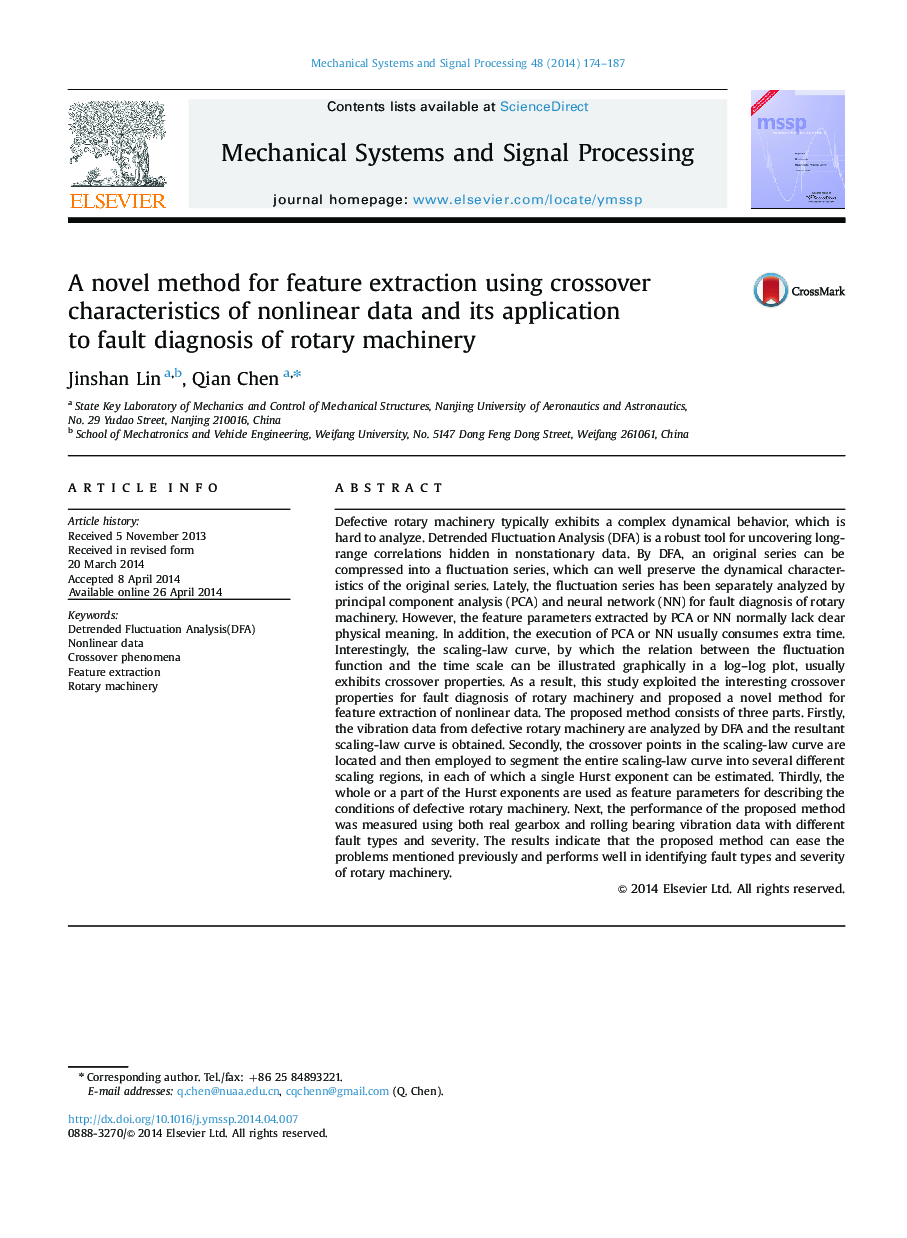| Article ID | Journal | Published Year | Pages | File Type |
|---|---|---|---|---|
| 560318 | Mechanical Systems and Signal Processing | 2014 | 14 Pages |
•Crossover characteristics of scaling-law curves of rotary machinery are exhibited.•Multiple Hurst exponents can be obtained using crossover characteristics.•A novel method for feature extraction is proposed using these exponents.•The proposed method can distinguish types and severity of mechanical faults.
Defective rotary machinery typically exhibits a complex dynamical behavior, which is hard to analyze. Detrended Fluctuation Analysis (DFA) is a robust tool for uncovering long-range correlations hidden in nonstationary data. By DFA, an original series can be compressed into a fluctuation series, which can well preserve the dynamical characteristics of the original series. Lately, the fluctuation series has been separately analyzed by principal component analysis (PCA) and neural network (NN) for fault diagnosis of rotary machinery. However, the feature parameters extracted by PCA or NN normally lack clear physical meaning. In addition, the execution of PCA or NN usually consumes extra time. Interestingly, the scaling-law curve, by which the relation between the fluctuation function and the time scale can be illustrated graphically in a log–log plot, usually exhibits crossover properties. As a result, this study exploited the interesting crossover properties for fault diagnosis of rotary machinery and proposed a novel method for feature extraction of nonlinear data. The proposed method consists of three parts. Firstly, the vibration data from defective rotary machinery are analyzed by DFA and the resultant scaling-law curve is obtained. Secondly, the crossover points in the scaling-law curve are located and then employed to segment the entire scaling-law curve into several different scaling regions, in each of which a single Hurst exponent can be estimated. Thirdly, the whole or a part of the Hurst exponents are used as feature parameters for describing the conditions of defective rotary machinery. Next, the performance of the proposed method was measured using both real gearbox and rolling bearing vibration data with different fault types and severity. The results indicate that the proposed method can ease the problems mentioned previously and performs well in identifying fault types and severity of rotary machinery.
